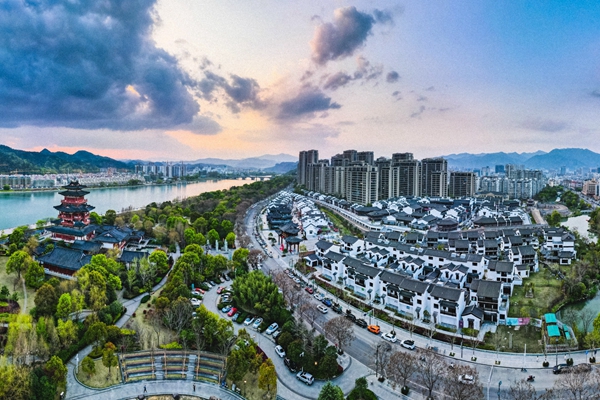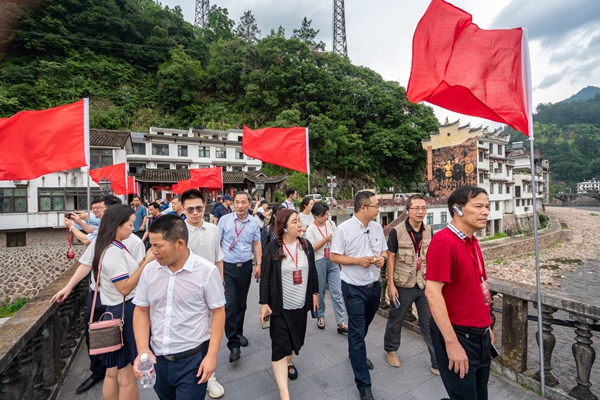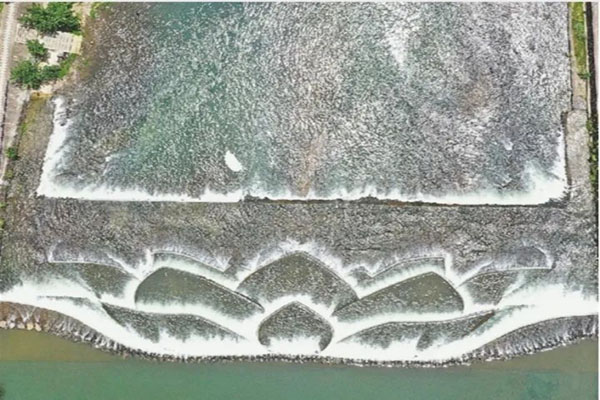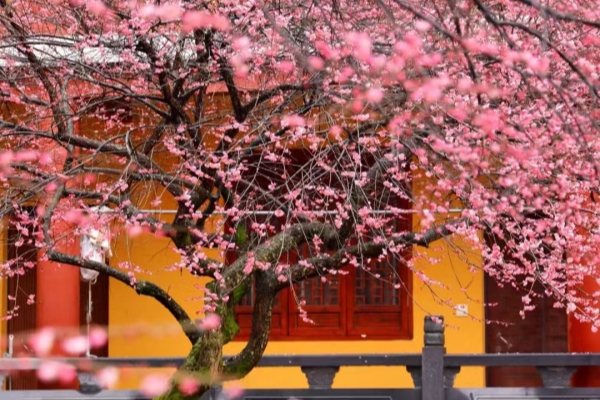Lishui sets example for 'red and green integration'

An aerial view of the urban area of Lishui. Numerous CPC legacies lie between the scenic mountains and rivers in the city. [Photo provided to chinadaily.com.cn]
Lishui in East China's Zhejiang province was an old revolutionary base area surrounded by mountains that has fueled its high-quality modern development by making full use of its local rich red tourism resources and its healthy natural conditions.
The city is considered the birthplace of the "revolutionary spirit of southwest Zhejiang", as the first Communist Party of China branch in southwest Zhejiang was established in the city's Suichang county in January 1927, while the revolutionary base area in southwest Zhejiang was built in Suichang's Wancunkou town in 1935.
The CPC legacies are well preserved in the city. There are now 465 sites that display Chinese revolutionary history and stories of the CPC in southwest Zhejiang, which has attracted many visitors to learn about the CPC's history, especially this year as the country is celebrating the centenary of the CPC.
In addition to the red tourism sites, visitors are also attracted to Lishui's local natural landscapes, which feature green mountains surrounded by cloud and mist, rivers with good water quality, as well as the fresh air. In 2020, Wangcunkou town received a total of about 200,000 tourists and generated about 25 million yuan ($3.9 million) in tourism income.
Blessed with a healthy natural environment, Lishui has been pursuing eco-friendly development by adhering to the idea proposed by the CPC leadership that "clear waters and green mountains are as valuable as mountains of gold and silver", which has proved effective in local rural revitalization efforts.
Villagers have enjoyed income growth by selling high-quality agriculture products and participating in service businesses brought by local tourism development. In 2020, the per capita disposable income of villagers reached 15,000 yuan in Jiulongkou village, which is a five-minute drive from Wangcunkou town.

A media group visits Wancunkou town to explore the revolutionary history in southwest Zhejiang. [Photo provided to chinadaily.com.cn]

 Lishui establishes intelligent biodiversity monitoring system
Lishui establishes intelligent biodiversity monitoring system New fungus species discovered in Qingyuan
New fungus species discovered in Qingyuan Lishui transforms weirs to aid fish migration
Lishui transforms weirs to aid fish migration